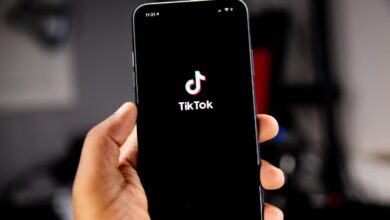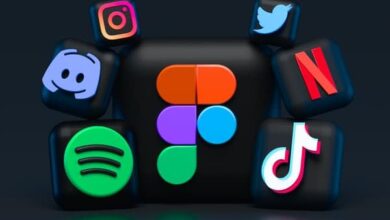Getting more ‘likes’ on Facebook
Many business owners hear that they need to be on Facebook, start a page with no strategy in mind, and then rule the whole exercise out as ineffectual when they fail to gather ‘likes’. Just imagine, for a moment, if you were to take the same approach with your business’ website. Would you be online at all, today?
There are many elements involved in gaining traction with potential customers on Facebook, most of which center around the content used and how it’s targeted. But you won’t get very far unless you establish what it is you want to achieve on Facebook before you start. The following is a series of points to consider for businesses wanting to increase their reach on the most populated of the social media platforms.
Content and purpose
Just as with web design, it’s important that you have a clearly defined purpose for your Facebook page. It’s also important to keep the needs of your customers in mind – what is the purpose of the page for them?
The best way of establishing the page’s purpose is to fill it with content. Sharing relevant, informative, useful information – links to videos, articles, blog posts, etc. – is effectively what Facebook, and most social media, is all about. Content helps to show what your business does. It’s central to driving likes and engagement and therefore to getting new customers and keeping existing ones interested.
The type of content that is best suited to Facebook is the subject of a certain amount of debate. The immediate temptation for most businesses on social media is to simply start talking about products and services. But, given the reason you have a Facebook presence in the first place, it’s best to take a moment to consider what sorts of content are likely to appeal to your customers.
“If you think about it, the more relevant, timely, and interesting content that a Facebook page has, the more people will engage with it and tell other people about it,” says Will Ockenden, director of social media at Lucre. “It’s like being a fantastically charismatic conversationalist at a party. More and more people will gravitate towards you to hear what you’ve got to say, and will tell their friends about you.”
Typically, around 80% of all content on your page should be targeted at the customer and their interests. This is what will convince them to click ‘like’ in the first place and to stay a fan. The other 20% can safely be used for sales-focused updates about products and services. This 80/20 ratio not only keeps visitors interested in your page and its updates but also makes them more receptive to the sales posts when they do come around.
Relevance and interest
The key to attracting more ‘likers’, and to keeping the attention of existing fans, is to use the non-sales content to reinforce how your followers view themselves in relation to your business.
“The 80% is about building a lifestyle around your brand, or building a concept around your brand,” says Annette Moloney, director of AM to PM consulting.
For example, a fashion retailer’s customers might aspire to a lifestyle in which they’re always immaculately dressed.
“They’ve got the beautiful bag and jacket, and they’re going out,” says Moloney. “So where are they going out to? What are the major events happening in the major cities?”
By considering your content in this way, you can tie all sorts of things into what you have to share, to make your brand feel more relevant to followers and their interests.
Simply posting relevant links and observing the sales/interest ratio isn’t enough to gain significant momentum, however. The real trick is to post content that is both relevant to their interests, and topical – that relates to current trends. If a piece of content seems more relevant because of its timeliness, Facebook users will be more inclined to read and share it.
Take, for example, Kony 2012, the video about Ugandan child soldiers, that went viral in early March. A video marketing business could have shared a blog post that lauded the motives of the video but picked apart its flaws from a production perspective. For prospective customers, the appeal of this video is now twofold: it appeals to businesses seeking video marketing, and to those swept up in the tide of comments about the viral video.
Timeline
Recently, Facebook changed the layout of individual user’s and business’ pages to display posts as branches on a timeline, with the most recent appearing at the top of the page. While the change is novel from a consumer perspective, it allows businesses to pin their most relevant content to the top of the page. It also gives them the opportunity to create a narrative with the content posted – something small businesses, especially, should take advantage of.
“All the best brands have stories – otherwise, they’re just mediocre, and it’s kind of hard to have a relationship with brands like that,” says Will Salkeld, a digital specialist at Hill+Knowlton Strategies. “If your brand has a great history, you have the power to show that via social media, which hasn’t really happened before. Previously, social media was so much more instantaneous, but now you can do a whole story and link back to your past, and use that as brand imagery.”
In this way, a business’ Facebook timeline can be treated as a transparency tool. If a page visitor can investigate the whole history of a business’ involvement on Facebook, and likes the story they’re presented with, they’re more likely to click ‘like’ and pay heed to the information the page shares with them.
Engagement
Although the number of ‘likes’ on a page is important, it’s the engagement it drives that’s the true measure of its success.
“The danger of social media is a lot of clients have expectations of meaningless metrics,” says Ockenden. “A clothing brand starting out on Facebook would look at Coca-Cola’s page, and say ‘I want 10 million likes because Coca-Cola has got 10 million,’ which is the wrong way to approach it.”
A quick look at the Facebook analytics service, Insights, reveals a metric called ‘People Talking About This. It shows how many people are engaging with the content you post and measures this by counting the times it’s been re-shared or acknowledged with a comment, direct mention, or ‘like’. Facebook treats these actions as if they were content being shared by that user, and displays the activity in that user’s timeline. Accordingly, the ‘talking about’ metric can be read as a measure of your business’ exposure on Facebook.
“When you look at any brand page, it’s never about how many likes you’ve got because there are several ways to get likes on Facebook,” says Priyanka Rao, director of custom furniture retailer Evolves. “The key stat to look at is how much interaction the page has. I’ve seen pages with 200 likes, but huge amounts of engagement, and I’d say that person got more return on investment (ROI) out of that Facebook page. In terms of things like getting ‘likes’ on the actual status comments, I would say that’s almost more important than getting the ‘liker’ in the first place because that activity is reported on the person’s own profile page.”
Incentives and competitions
One of the simplest ways of attracting attention on Facebook is by way of competitions with material incentives.
“’ What’s in it for me? Is the number one question people subconsciously ask themselves before they tick ‘like’ on any brand,” says AM to PM’s Moloney.
She cites a recent Sensis report on social media use that reinforces this idea.
“One of the main things they asked was what consumers want from businesses or brands they follow,” she continues. “It found that 57% said they look for things where there’s some sort of discount.”
The second most popular was giveaways, which 45% of respondents indicated as a motivator for engaging with a brand on social media, followed by invitations to events, and product information (each 41%). She explains that providing incentives needn’t be accompanied by massive fanfare, and can be quite simple to orchestrate.
“A really good way is if you’ve got something small to give away,” says AM to PM’s Moloney. “Celebrate milestones. Your first milestone might be 50 followers. You might be on 40 followers and you might say ‘we’re really excited – we think we’re going to hit 50 followers today. Tell your friends to like us and tell them that you sent them. We’re going to be giving away a gold-class movie ticket.’ Just do some little things like that that cost you nothing, once a week, to build those numbers up.”
Since Facebook has started selling ads and charging businesses for analytics services, the rules around running competitions have become more stringent.
“It’s important to check out Facebook’s contest regulations because they’ve got a number of guidelines around how competitions can and can’t be run,” says Lucre’s Ockenden.
He explains that brands are no longer allowed to run competitions directly on their Facebook wall, but only through third-party plug-ins, such as Pagemodo or Wildfire, that charge for the privilege. He also stipulates the importance of framing competitions with what he refers to as a ‘like gate’
“You see it when you visit a page and it says ‘like this page to enter the competition.’ A really good way for brands to start building their community is to just run a really simple competition. ‘Win a week’s supply or ‘50% off, ‘just like to enter.’ Everyone loves those competitions. They’re easy to enter, and the price point is enticing enough but low enough to be realistic.”
Facebook Ads
Another straightforward method of building momentum is to use Facebook Ads. The ads work in a similar way to Google’s AdWords service; they’re priced on a pay-per-click basis that businesses bid for, and can be targeted according to Facebook users’ demographics. The more specific the demographic, the more targeted, and therefore expensive, the ad.
“The beauty of Facebook advertising is it’s quite easy for anyone to learn to use and set up. Like the rest of Facebook, it’s incredibly user-friendly,” says Lucre’s Ockenden. “What brands use Facebook advertising to do is to highlight what they’re doing on their Facebook wall, whether it’s a competition, or offering interesting content. They use that as a means to drive traffic to their own Facebook pages.”
With the introduction of the Timeline feature, Hill+Knowlton’s Salkeld explains that the pricing structure of ads has become more complex.
“The difference between paid and non-paid Facebook use is going to change a lot, especially with Timeline for business,” he says. “Pages now can pay for extra reach. Previously, if you posted a status update or a photo, Facebook’s Edgerank algorithm privileged the stuff that gets the most interactions.
“The content that gets the most comments and likes – that’s what stays at the top of people’s news feeds. However, now, with the new timeline, people can actually pay for additional reach. Instead of reaching about 16% of their audience, which is the average, I think, they’re going to reach closer to 70%, and that gives them a real opportunity to increase likes.”
Broader social networking
Finally, it’s important to remember that the basic idea of ‘reaching’ people on social media comes back to networking.
Graham King is the founder and CEO of Rexov Professional Development, and his business page boasts 14,000 followers – a number which he says he’s grown in less than a year.
“They’re all organic. No pay-per-click, no advertising, no timeline, no ‘come and like my page’. We do not believe in it,” he says. “As a business page, you want to be talking to other business pages as the business, because that’s how you’re going to attract people to actually see that you exist. That’s the organic way – networking is networking.”
It pays to think in terms of networking outside of Facebook as well. Lucre’s Ockenden encourages his clients to use Facebook plugins to place ‘like’ buttons on their websites, and even alongside individual products.
Evolvex’s Rao takes a similar approach, with a permanent Facebook link in the footer of the business website.
“We’re also starting to do that in our correspondence, in the footer of emails. Also after post-purchase: ‘if you’d like to stay in touch, here’s our Facebook page,’ just to really emphasize that’s the best mode of communication for customer service.”
It helps to remember that, essentially, gaining a following on Facebook whittles down to the process of telling people about your business. Never pass up an opportunity to show potential customers who you are and what you do.
Not happy with your online traffic? Get more customers to your site with Netregistry’s Pay-Per-Click services.




